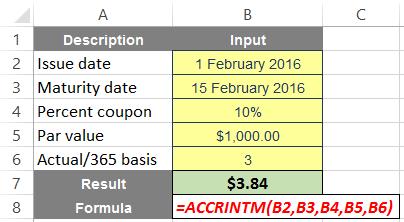A to Z of Excel Functions: The ACCRINTM Function
17 June 2016
Glad you came back to visit our regular blog post on the A to Z of Excel functions. Today we introduce you to the ACCRINTM function…
The ACCRINTM function
I so want to rename this function ACCRINTM STANLEY – football followers will get it! The ACCRINTM function returns the accrued interest for a security that pays interest on maturity. This differs from the ACCRINTM function discussed last time as that functions calculates the accrued interest for a security that pays interest on a periodic basis instead.
To take advantage of this function please use the following syntax:
=ACCRINTM(issue, settlement, rate, par, [basis])
Prior to trying out this function there are a few things you need to know.
- Excel stores dates as sequential serial numbers so they can be used in calculations. By default, January 1, 1900 is serial number 1, and January 1, 2008 is serial number 39448 because it is 39,448 days after January 1, 1900
- issue, settlement, and basis are truncated to integers
- if issues or settlement is not a valid date, ACCRINTM returns the #VALUE! error value.
- if rate < 0 or if par > 0, ACCRINTM, returns the #VALUE! error value
- if basis < 0 or if basis > 4, ACCRINTM returns the #NUM! error value
- if issue > settle, ACCRINTM returns the #NUM! error value
- ACCRINTM = par x rate x A/D
where:
- A = Number of accrued days counted according to a monthly basis. For interest at maturity items, the number of days from the issue date to the maturity date is used
- D = Annual Year Basis.
Arguments:
- issue – the security’s issue date
- settlement – the security’s maturity date
- rate – the security’s annual coupon rate
- par – the security’s par value. If you omit par, ACCRINTM uses $1,000
- basis – Is optional and is defined as the type of day count basis to use.
Please see my example below:


